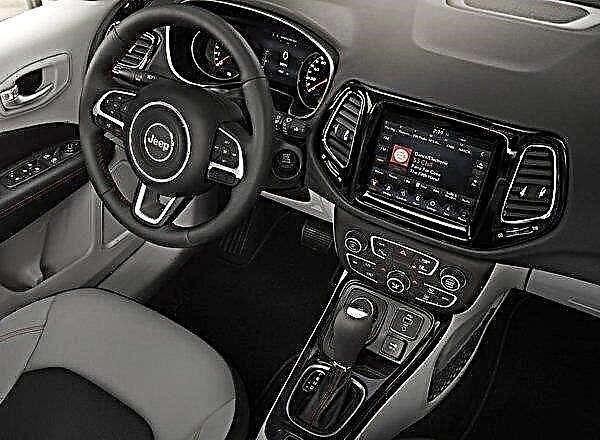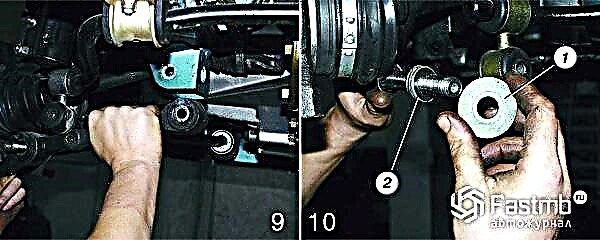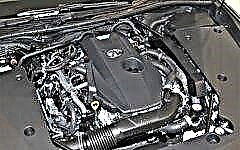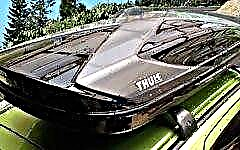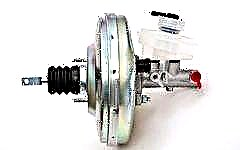

The content of the article:
- Amplifier functions
- Scheme
- Principle of operation
- Sensors
- Possible breakdowns
- Repair price
The modern vacuum booster is the main and integral element of the vehicle braking system. From the name it can be understood that the main purpose is considered to increase the force that is transmitted from the pedal to the brake cylinder. Thanks to such well-coordinated work, driving becomes comfortable, easy, and the braking process itself becomes more effective. In order to understand how the entire mechanism of the vacuum cleaner works, we will consider its details and basic nuances.
What is the vacuum brake booster for?

As already mentioned, the main functions of a car's vacuum brake booster are considered to be the increase in force at the moment the brake pedal is pressed. Thanks to this, the booster ensures efficient operation of the braking system. This is especially noticeable during emergency braking. Without an amplifier, the response of the car will be slow and it is difficult to predict how long it will take for the car to come to a complete stop.
Thanks to the coordination of mechanisms, in the event of emergency braking, the entire brake system will work with high efficiency. Without a vacuum cleaner, the car will not be able to stop abruptly, and pressing the brake pedal itself is significantly different in effort.
How does a vacuum amplifier work?

Generally speaking, about the design of the vacuum cleaner, it is a sealed case, often round in shape (if you look at the end). As a rule, it is located in the engine compartment, in the area of the brake pedal. It is on the body of the vacuum cleaner that the main cylinder of the brake system is most often located. The hydraulic vacuum brake booster is considered less common. It is included directly in the hydraulic part of the drive.

Diagram of the device of a conventional vacuum brake booster
- Diaphragm;
- Atmospheric channel;
- Pusher;
- Valve piston;
- Vacuum channel;
- Stock;
- Recoil spring.
Each detail plays its own, not unimportant role. It should be noted that, depending on the type of fuel, the structure of the vacuum amplifier will differ. So for a gasoline unit, the intake manifold serves as a source of vacuum discharge, before fuel is supplied to the cylinders. If we talk about a diesel engine, then a special electric vacuum pump serves as a vacuum discharge system. The very low vacuum in a diesel engine (in the intake manifold) is insignificant, so an electric pump is an indispensable element.
Further on the list is the diaphragm connected to the rod (the master cylinder of the brake system). Due to the movement of the diaphragm, the piston moves, thereby pumping the brake fluid to the brake cylinders on the wheels of the car. An equally important element is the atmospheric chamber. If we consider its initial position, then it is connected to a vacuum chamber. By pressing the brake pedal, the camera moves and connects to the atmosphere. To increase the efficiency of emergency braking, an additional electromagnetic rod drive can be included in the design of the vacuum cleaner, which significantly speeds up the movement of elements.
How does a vacuum brake booster work?

Having considered the device of the brake vacuum cleaner, it is worth understanding the principle of its operation. The basis for the operation of the vacuum booster is the pressure difference. I would like to note right away that in the initial position, the pressure in the chambers will be the same, which is also equal to the pressure of the vacuum source. The whole process of the vacuum cleaner begins with pressing the brake pedal. The pusher in the amplifier transmits the force given to it to the next valve, which in turn closes the channel that connects the two chambers. Now the chambers are tightly divided into an atmospheric chamber and a vacuum chamber. If the valve moves further, then the atmospheric chamber is connected directly to the atmosphere. As a result, the vacuum in the chamber is reduced.

Due to the change in pressure in the chambers, the piston rod, the master brake cylinder begins to move. When the brake system has completed the task and braking is stopped by releasing the brake pedal, the valve returns to its original position, and the pressure in the chambers is equalized (the chambers are connected to each other).
Thanks to the return spring, the diaphragm returns to its original position. The whole work of the vacuum booster is proportional, that is, the harder you press on the brake pedal, the more the car's brakes will work, respectively, the brakes are faster and the more efficient in fulfilling the task.
What are the sensors in the vacuum brake booster?

In addition to the main parts of the brake vacuum cleaner, sensors located along the perimeter of the structure play an important role. These sensors not only help improve braking performance, but also make the vehicle easier to drive. The most common is a membrane travel sensor, which gives the electronics an understanding of the state of the surrounding situation.
Also in the vacuum amplifier there can be a rod displacement sensor, as well as a sensor for the degree of vacuum of the chambers. The last sensor signals an excess or insufficient vacuum in different chambers of the brake booster.
Possible breakdowns of the vacuum booster

Like any other mechanism, the vacuum cleaner may fail sooner or later. The very first sign of a breakdown is the appearance of various problems with the brakes when you press the pedal. Any part can break, from the return spring to the diaphragm. Finding a worn out or broken part is not as difficult as determining the presence of a vacuum cleaner itself.
The conclusion about the vacuum booster suggests itself, it is, in fact, an irreplaceable element of the entire braking system of a car. You can do without it, but it's better not, since modern security systems largely react to the braking force of the car. For example, let us point out several cases by which the malfunction can be identified in the easiest and fastest way.

The first is the simplest and most effective way to check. Start the car engine, then after 30 seconds turn it off. Then, with the usual effort, we press the brake pedal. If the vacuum cleaner is serviceable, then at the first press, the system will work as expected, but subsequent pressings will be like a wall. In the case when the repeated pressing of the brake pedal is just as light or with dips, this is already an indicator of a malfunction.
The second way is the opposite to the first. On the muffled engine, depress the brake pedal and hold the pedal to start the unit. A small dip should form and when you release the pedal, it will return to its original position. If the brake pedal remains depressed, this is an indicator of a diaphragm or reverse acting spring breakage. This is usually an indicator of significant damage to parts.
The last third method is to check for air leaks. We press the brake pedal, and without releasing it we turn off the engine. Now we hold the pedal in this position for several minutes. If the system is not tight, the spring will lose its force, the pressure will begin to increase and thereby raise the brake pedal up. This is well felt on the leg, which will give out a malfunction of the vacuum cleaner.
The price of repairing the brake system vacuum cleaner

Having determined the breakdown of the vacuum brake booster, you should not postpone the repair until later. Brakes in a car are one of the main components. If you are not afraid and are well versed in the car, it will not be difficult to repair this part. For example, a repair kit of rubber parts for a VAZ 2108 will cost about 500 rubles.A complete repair kit for the same car model will cost from 800 rubles.
Having decided on a complete replacement of the vacuum amplifier, the price will not be sky-high. On average, for the same VAZ 2109 it will be from 1,750 to 3,500 rubles. Much depends on the manufacturer, build quality and, of course, how long such a mechanism will serve in the future.

The conclusion about the vacuum booster suggests itself, it is, in fact, an irreplaceable element of the entire braking system of a car. You can do without it, but it's better not, since modern security systems largely react to the braking force of the car.
If you do not use a vacuum cleaner, you will have to press the brake pedal with effort, and maybe even with two feet. In addition, driving without a vacuum booster is dangerous, since in the event of emergency braking, the car simply will not be able to stop quickly, and the braking distance will be long.



